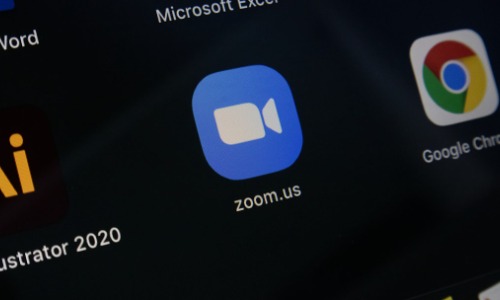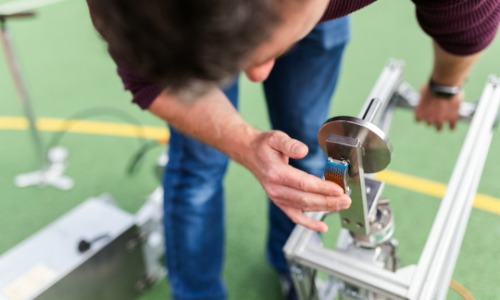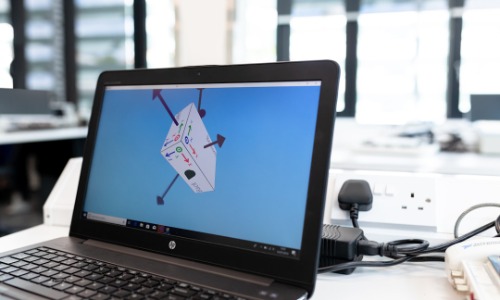In today’s world, it is not enough to have a reasonably designed website. They also have to be user-friendly and load very fast. A simple way to enhance a given website is by incorporating image icons. However, are you aware that the proper technology icon can also improve the SEO of your website? Yes, it’s true! If you use them right, icons will make your site look nicer, help search engines understand your content, and possibly rank better.
In this blog, you will learn what a technology icon is, how it influences SEO, and how to leverage it properly. Let’s dive in!
What Is a Technology Icon and Why Should You Care?
You have most likely encountered icons on almost every website you have ever visited. They are icons or pictures of small sizes that depict certain actions, characters or even things. A technology icon is a shortcut that is associated with the technology field, such as Wi-Fi, cloud, AI, and many others.
But why should you bother with them? First of all, icons are not only the pretty elements of the interface. They assist people to move around the website easily and also to make content easier to comprehend. For instance, rather than using the word ‘settings,’ a gear will direct users to where they need to be without having to read.
From an SEO perspective, it’s important for search engines such as Google to rank websites that offer a positive user experience. A skillfully placed technology button can declutter the screen, enhance organization and comprehensibility, and organize the viewers’ actions on your website. All of this can lead to better engagement and a higher ranking for the website.
Can Icons Really Boost Your SEO?
You could be asking yourself, “Is it possible that such a small detail as an icon can affect SEO?” The answer is yes! Many benefits can be associated with the use of icons in a website to enhance its performance in one way or the other.
- Improved User Experience (UX): Search engines know how long a person stays on your site. When users can easily understand the layout of your website and recognize the icons, they can spend more time on your website and search for more.
- Better Mobile Performance: People often use their mobile devices to access websites, and iconography contributes to white space and simplicity, which is important for small screens. A good technology icon will always make sure that users, whatever device they are using, are in a position to access what is there for them.
- Faster Load Times: For instance, while using large images can take time to load, icons, when well optimized, load faster. This can help you make your website faster, and speed is an important factor in the ranking of your website in the search engine.
- Improved Accessibility: Properly describing your icons (using alt tags) benefits visually impaired users and also makes it easier for search engines to understand your content.
So, if used correctly, icons not only make the website look more attractive but also help search engine crawlers to better understand the content.
Best Ways to Optimize Icons for Search Engines
Since we have established that icons do influence SEO, let us discover more about how to use them correctly. Here are some simple yet effective tips to make sure your icons help your website rank better:
1. Choose the Right File Format
Choosing the right file extension can greatly affect the loading time and look of your website. The best formats for icons are:
- SVG (Scalable Vector Graphics): These icons are quite small and can easily be scaled up or down with no change in the quality of the images.
- PNG (Portable Network Graphics): Good for icons with many colors, but the image might be larger in size.
- WebP: A newer format that provides very good quality at a much smaller size.
2. Use Descriptive File Names and Alt Text
Search engines are not capable of reading images; it means that they depend on the name of the file and the text that has been used to describe it, called alt text. For instance, Instead of naming your icon icon1.png, use something meaningful like cloud-technology-icon.png. Also, it is advisable to include a caption like ‘Cloud storage technology icon for backup services’.
3. Optimize Icon Size and Compression
If you use large image files for icons on your site, your site will be slower to load. To optimize the icons in a given project without compromising their quality, you can use tools such as TinyPNG and Squoosh. This is very important since icons should not be larger than 100 KB to enable the website to load within a short time.
4. Implement Responsive Design
Your icons should be responsive and should fit into any screen size. To ensure that they are not distorted, blurred, or pixelated on desktops, tablets and smartphones, apply CSS.
5. Lazy Loading for Faster Performance
With lazy loading, icons are not loaded until the user needs them, and that improves the time the page takes to load initially. This is useful for websites that use a lot of icons.
Now that you know the basics of designing technology icons, you will be able to ensure every icon you put on your site is helpful.
Avoid These Common Icon Mistakes
Although icons can greatly improve the look of any site, there are some mistakes that are not only unattractive but can also cause a website to lose its SEO advantage. Here are a few things you should avoid:
- Using Too Many Icons: Placing too many icons on your website can overwhelm the user and make your site messy. Use only necessary icons that have a specific function.
- Ignoring Accessibility: Not providing or providing inadequate alt-text or choosing icons with low contrast can cause problems for people with disabilities when using your website.
- Large File Sizes: If your icons are not optimized, they can cause delays in your website, resulting in a high bounce rate and low ranking.
- Poor Placement: Icons should be placed where they will be of most use. ‘Random placement is likely to be more confusing to the user than useful.’
If you avoid these mistakes with your icons, then they will only add value to the user experience and also the SEO of your site.
Tools to Help You Optimize Icons Like a Pro
If you have no idea where to begin when it comes to icon optimization, that’s completely okay! You can easily find utilities that will allow you to design, fine-tune, and check your icons for compliance with SEO-friendly standards. Some popular tools include:
- Canva: Very useful for creating individual icons that will fit your brand’s design.
- FontAwesome: A collection of free and paid-for icons that are optimized for a search engine.
- Google PageSpeed Insights: Allows you to examine your website and make recommendations for icon optimization.
- Squoosh: It is a free application for packing and optimizing icons for usage on the website.
With the help of the above-mentioned tools, you are able to generate a collection of finely optimized images, therefore enhancing the search engine optimization of your website and, at the same time, giving your website a beautiful look.
Conclusion
Even though icons are such a small aspect of a website, they can greatly help with SEO and the overall usability of your site. Having a good and efficient technology icon can assist users in using your website, increase the website speed, and even increase your website rank on search engines.
Applying some really simple tips like selecting the correct icon formats, providing descriptions, optimizing the size of your files, and avoiding certain mistakes will help you significantly improve your website’s SEO. So, please do not neglect the importance of good icons and start improving them on your site right away!
Do you want to make your website perfect and get the right icon strategy to do it? Please don’t hesitate to tell us in the comments below!




